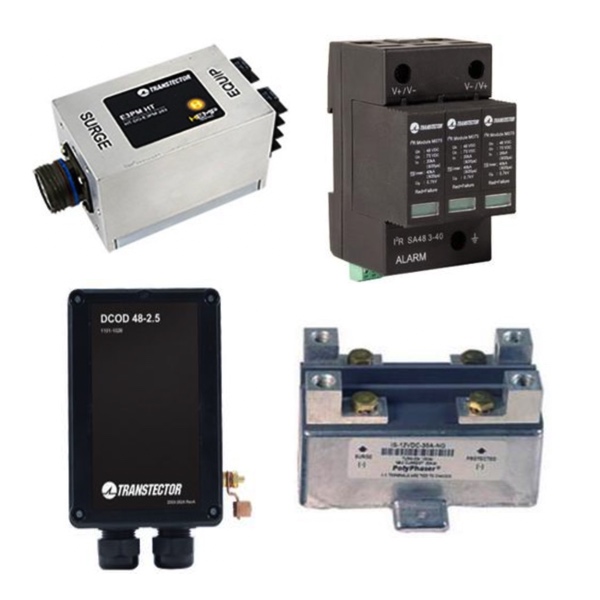Transtector DC Line Surge Protection

Transtector DRDC Series with SASD technology provides superior surge protection for DC and low frequency data lines. They are DIN rail mounted with replaceable suppression modules. I2R ICP Series with SASD technology provides silicon surge protection for DIN rail applications. The replaceable suppression modules are installed in parallel and feature visual and remote status indication.
DRI Series with SASD technology provide two pair/four wire protection approved for hazardous locations. The DIN rail mount, plug-in suppressor modules feature line and load bidirectional protection and visual and remote status indication. I2R IEP DC Series with SASD technology provides silicon surge protection for DIN rail mount applications. The replaceable suppressions modules feature visual and remote status indication.
DCOD Series with SASD technology provides silicon surge protection for indoor/outdoor tower-top antenna applications. It features series 25 A two-port protection, surge and protected wiring terminals and remote status monitor relay contacts. DC Defender with series fused, SASD surge protection provides 48 VDC silicon surge protection for indoor/outdoor tower-top antenna applications. It features NEMA 3R enclosure, 2 mode DC power protection and 10 AWG wire for 15 A circuits.
More Information about Transtector DC Line Surge Protection
DC surge protectors are devices that are designed specifically for direct current lines. Unlike AC, that oscillates back and forth, DC remains at a constant voltage. This makes arcing a bigger hazard and the surge protection device must be designed with additional arc extinguishing measures.
Surge Protection Basics
What causes power surges?
Lightning strikes are one of the most common causes of power surges and can affect an electrical system even if the strike occurs miles from the electrical source. Conductors buried underground can still transmit the energy of the strike to electrical equipment located indoors. Lightning rods and other grounding equipment can help, but do not completely eliminate the risk.
Switching equipment such as motors, transformers and other equipment can cause a sudden change in load, power loss and disconnection of circuit breakers. This sudden switching can cause overvoltage, leading to power surges. The closer the switching occurs to the electrical system, the more threat it will pose to the equipment.
Operations that a user performs can cause surges, but typically have a very short duration. Examples include: starting a motor, opening circuit breakers and welding equipment.
What is the best way to stop power surges?
By using transient surge suppressors, the problems associated with most transient surges can be eliminated. They provide protection by either blocking or shorting the voltage over its operating limit to ground, protecting circuits downstream of the suppressor. The best way to approach this is in tiers.
Tier 1 – The protection is closest to the incoming power source. This is the main protection for a particular location.
Tier 2 – This is in an area that will be protecting multiple devices that have branch protection. An electrical control panel would be an example of this type of application.
Tier 3 – Individual protection. In the case of an industrial control panel, this would be protection for each instrument entering the panel.

